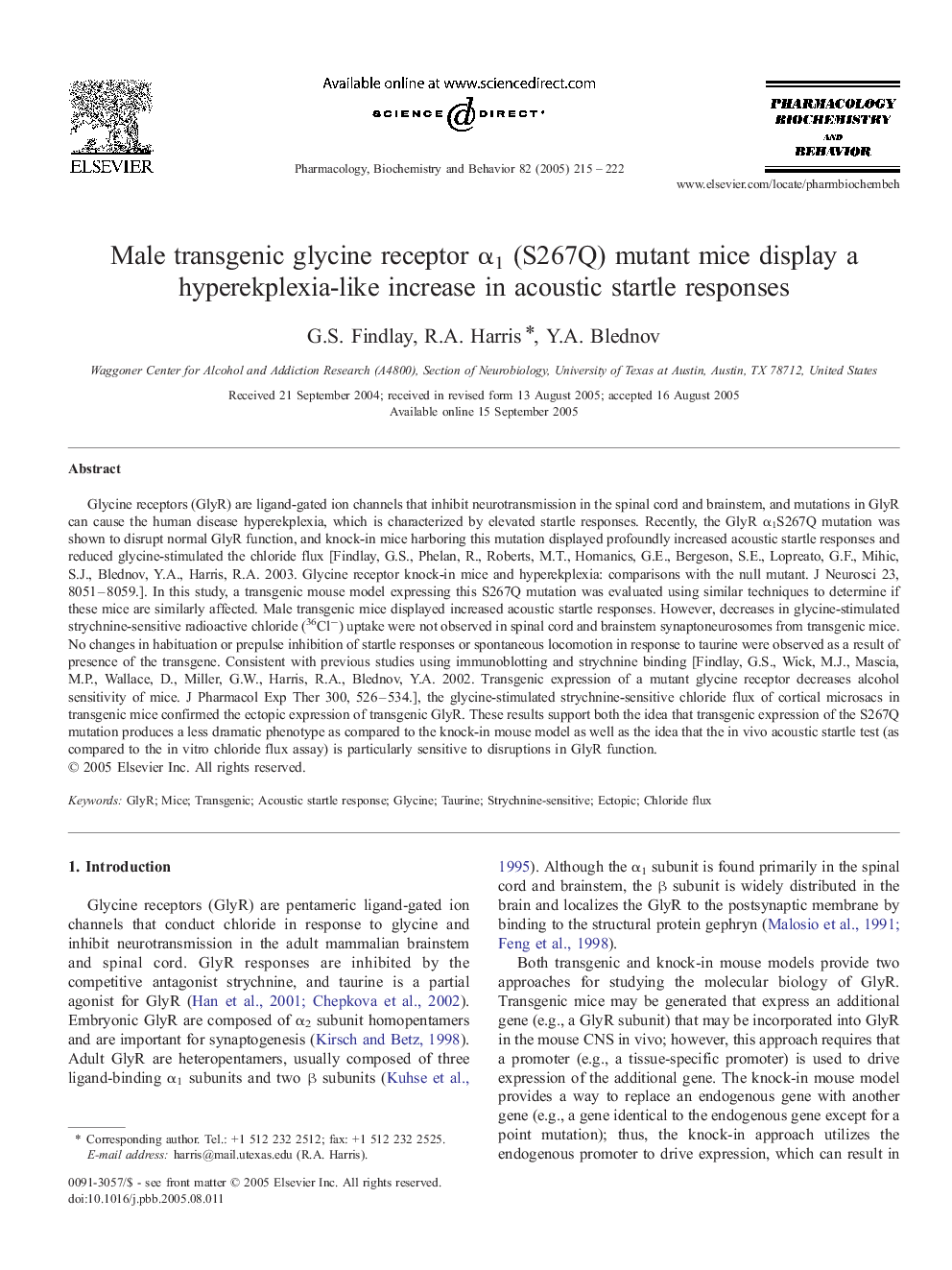| Article ID | Journal | Published Year | Pages | File Type |
|---|---|---|---|---|
| 10838380 | Pharmacology Biochemistry and Behavior | 2005 | 8 Pages |
Abstract
Glycine receptors (GlyR) are ligand-gated ion channels that inhibit neurotransmission in the spinal cord and brainstem, and mutations in GlyR can cause the human disease hyperekplexia, which is characterized by elevated startle responses. Recently, the GlyR α1S267Q mutation was shown to disrupt normal GlyR function, and knock-in mice harboring this mutation displayed profoundly increased acoustic startle responses and reduced glycine-stimulated the chloride flux [Findlay, G.S., Phelan, R., Roberts, M.T., Homanics, G.E., Bergeson, S.E., Lopreato, G.F., Mihic, S.J., Blednov, Y.A., Harris, R.A. 2003. Glycine receptor knock-in mice and hyperekplexia: comparisons with the null mutant. J Neurosci 23, 8051-8059.]. In this study, a transgenic mouse model expressing this S267Q mutation was evaluated using similar techniques to determine if these mice are similarly affected. Male transgenic mice displayed increased acoustic startle responses. However, decreases in glycine-stimulated strychnine-sensitive radioactive chloride (36Clâ) uptake were not observed in spinal cord and brainstem synaptoneurosomes from transgenic mice. No changes in habituation or prepulse inhibition of startle responses or spontaneous locomotion in response to taurine were observed as a result of presence of the transgene. Consistent with previous studies using immunoblotting and strychnine binding [Findlay, G.S., Wick, M.J., Mascia, M.P., Wallace, D., Miller, G.W., Harris, R.A., Blednov, Y.A. 2002. Transgenic expression of a mutant glycine receptor decreases alcohol sensitivity of mice. J Pharmacol Exp Ther 300, 526-534.], the glycine-stimulated strychnine-sensitive chloride flux of cortical microsacs in transgenic mice confirmed the ectopic expression of transgenic GlyR. These results support both the idea that transgenic expression of the S267Q mutation produces a less dramatic phenotype as compared to the knock-in mouse model as well as the idea that the in vivo acoustic startle test (as compared to the in vitro chloride flux assay) is particularly sensitive to disruptions in GlyR function.
Related Topics
Life Sciences
Biochemistry, Genetics and Molecular Biology
Biochemistry
Authors
G.S. Findlay, R.A. Harris, Y.A. Blednov,
